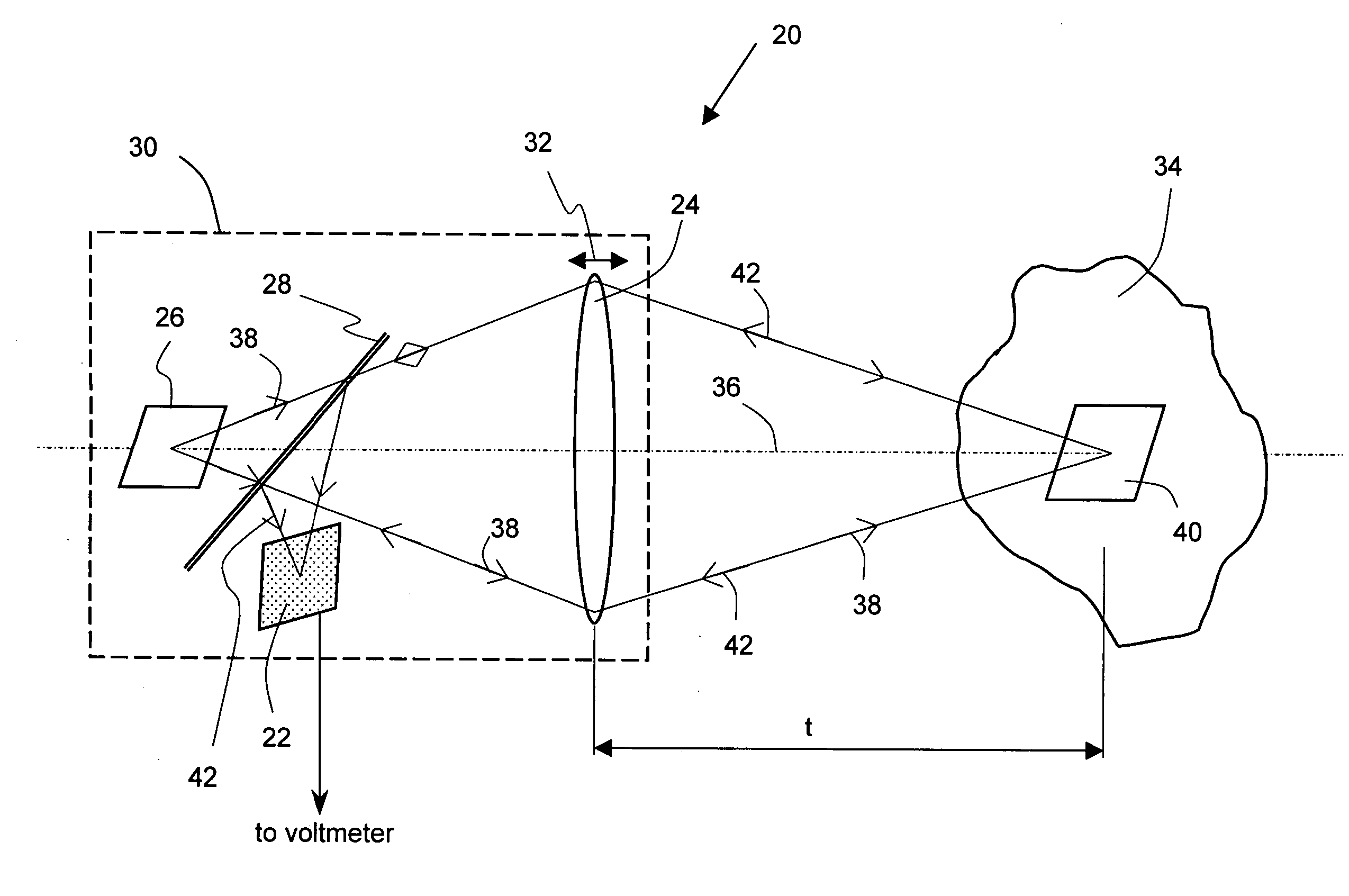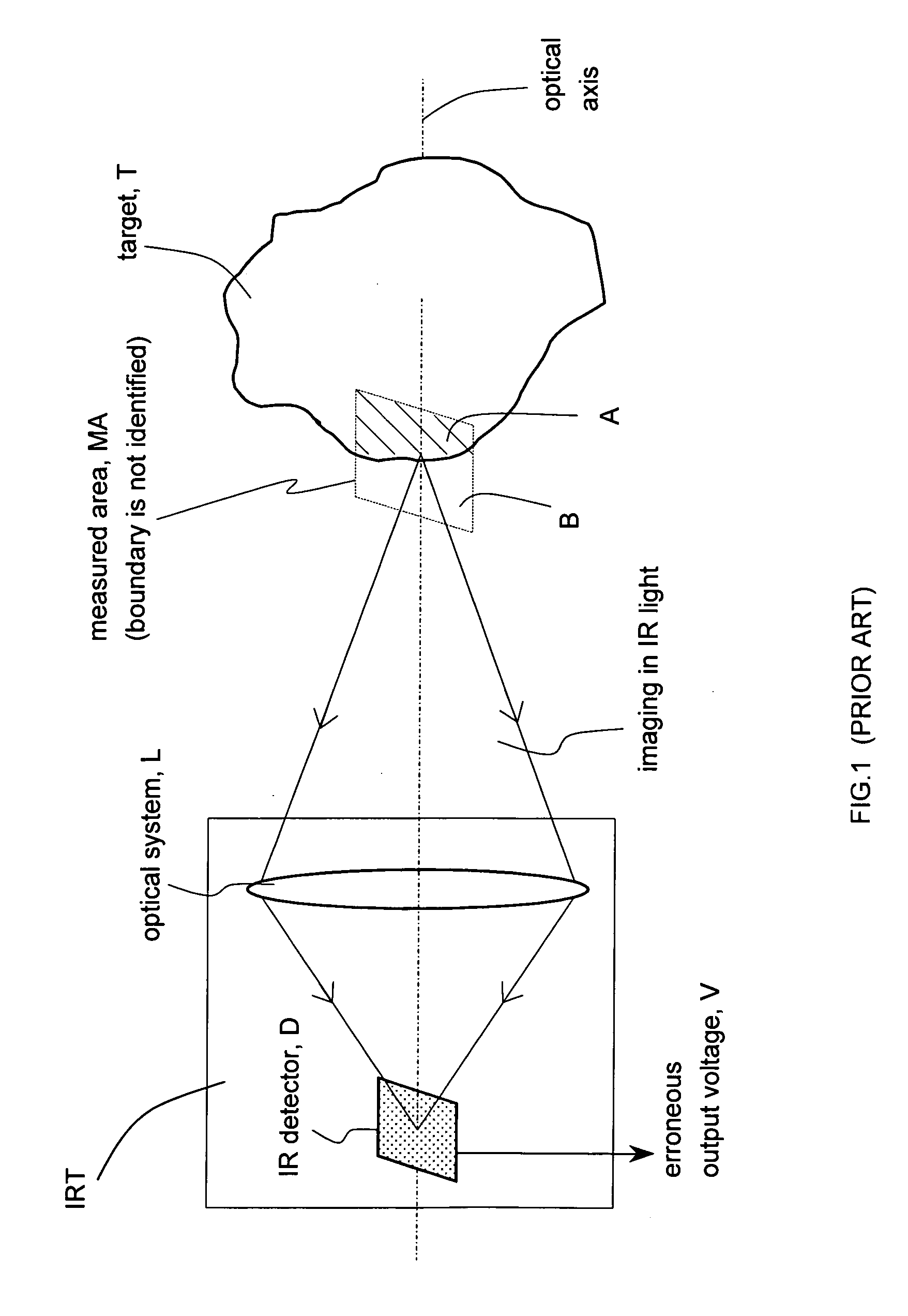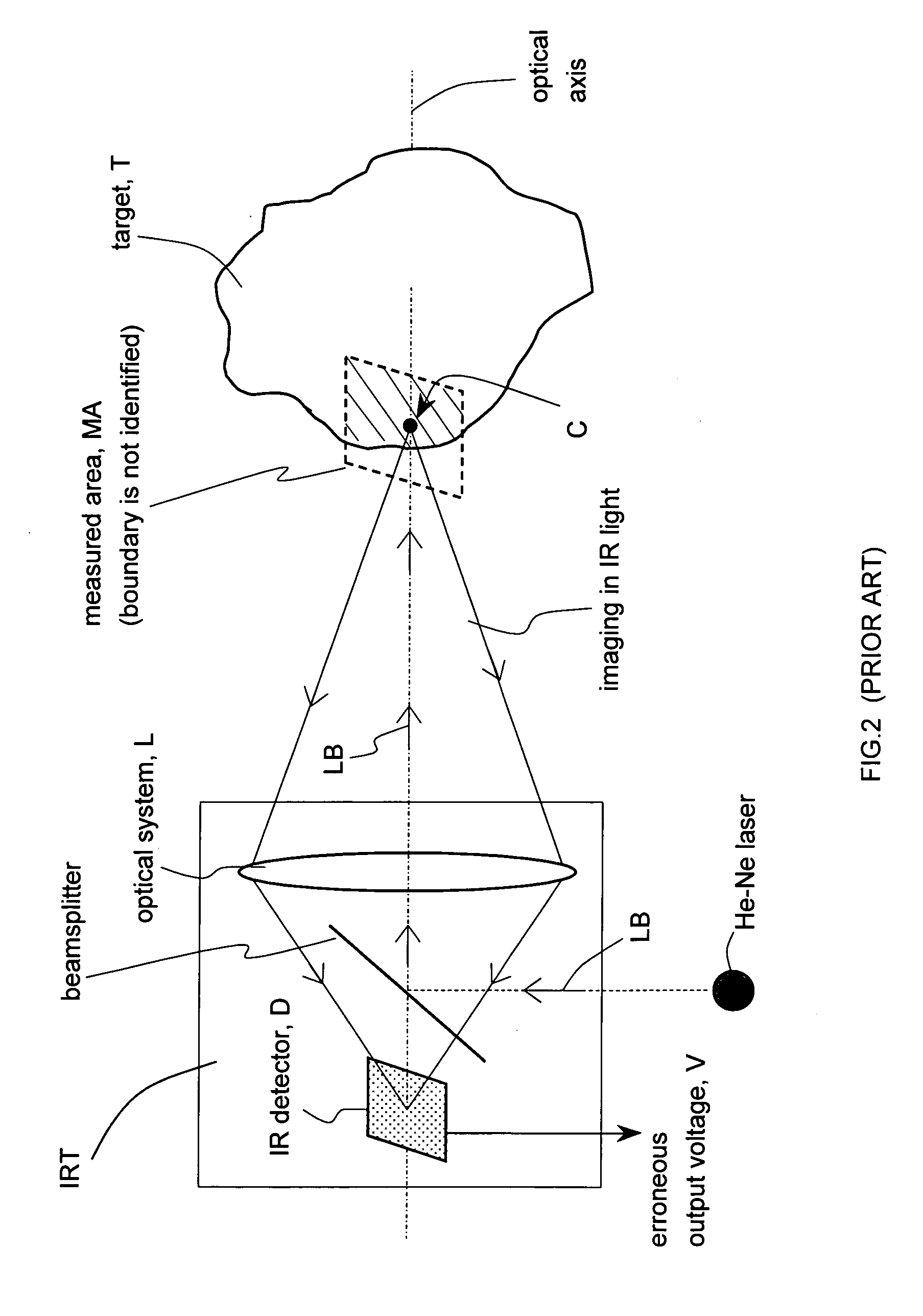Infrared thermometer with through-the-lens visible targeting system
a visible targeting and infrared thermometer technology, applied in the field of optical detectors, can solve the problems of inability to visually control the alignment of the irt with the target, the irt is known to be extremely susceptible to reading errors, and the output reading is erroneous, so as to achieve cost-effective and mass-producible implementation
- Summary
- Abstract
- Description
- Claims
- Application Information
AI Technical Summary
Benefits of technology
Problems solved by technology
Method used
Image
Examples
Embodiment Construction
[0022] This invention arose from a long-time need in the field of infrared thermal measurements. Conventional IR thermometers have been unable to precisely and efficiently align the IRT on the target and to identify the target area being measured, so as to allow them not to collect any IR radiation emanating from the background surrounding the target and thus reduce measurement error. This invention provides the first IRT system capable of visible identification of the target area as required for accurate optical alignment between the IRT and the target for error-free measurement. This performance is achieved with a combination of variable-focus achromatic optics and a novel visible light source which is judiciously selected and positioned inside the IRT system so as to form an image that is optically coincident with the image of the IR-detector under any pre-defined imaging conditions. The visible image of the VLS formed on the target surface precisely defines the area of the targe...
PUM
 Login to View More
Login to View More Abstract
Description
Claims
Application Information
 Login to View More
Login to View More - R&D
- Intellectual Property
- Life Sciences
- Materials
- Tech Scout
- Unparalleled Data Quality
- Higher Quality Content
- 60% Fewer Hallucinations
Browse by: Latest US Patents, China's latest patents, Technical Efficacy Thesaurus, Application Domain, Technology Topic, Popular Technical Reports.
© 2025 PatSnap. All rights reserved.Legal|Privacy policy|Modern Slavery Act Transparency Statement|Sitemap|About US| Contact US: help@patsnap.com



